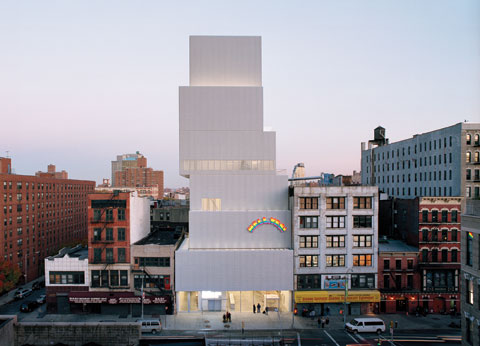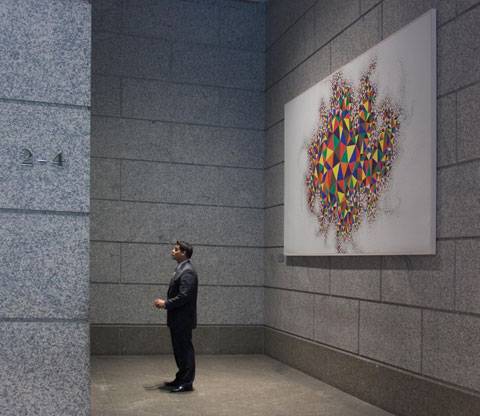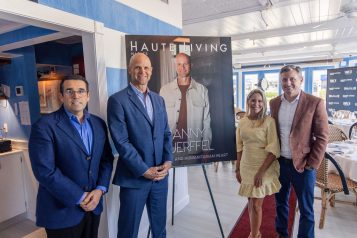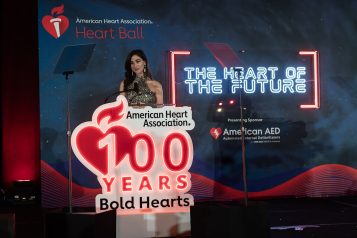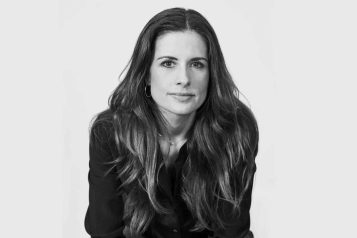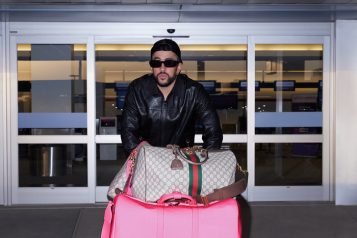The New Museum of Contemporary Art breaks new ground in Manhattan’s Lower East Side, garnering both praise and put downs.
By Marina Cashdan
To kick-start this, the museum stayed open for 30 consecutive hours on opening day to commemorate its 30th anniversary, allowing visitors to stop in at no cost.
“Hell, Yes!” reads the rainbow installation by Swiss artist Ugo Rondinone. It hangs on the façade of the $50 million New Museum of Contemporary Art, a brand-new seven-story edifice on the Bowery in New York’s Lower East Side, an area once known for its S.R.O.s, “Bowery Bums,” and punk rockers. “The [Rondinone] installation encapsulates the philosophy of openness, fearlessness, and optimism that surrounds the New Museum’s reemergence in the contemporary art community, as well as its history as the home of socially-committed contemporary art,” comments Museum director Lisa Phillips, who has been director of the 30-year-old institution since 1999. Although the Bowery Mission and a handful of restaurant-supply stores and lighting stores still dot the street, the 60,000-square-foot, minimal white building stands amid a transitioning neighborhood entering the next chapter of its New York City life. Posh hotels like Sean McPherson and Eric Goode’s Bowery Hotel and the Thompson Group’s soon-to-open Lower East Side hotel overshadow one of the last downtown youth hostels left in Manhattan; upscale apartment complexes keep sprouting; glass houses are being built on top of tenements; young galleries like Thierry Goldberg gallery, James Fuentes, and Eleven Rivington have put down roots; and established galleries like Salon 94 (Upper East Side), Museum 52 (London), and Lehman Maupin (Chelsea) have erected satellite galleries in the neighborhood.
However, while the newly constructed building, designed by Tokyo firm SANAA (architects Kazuyo Sejima and Ryue Nishizawa), and the institution has gotten a lot of positive attention since its opening, it has also garnered a great deal of criticism. Phillips comments that “The New Museum is dedicated to challenging conventional ideas of art-making, and offers artists who have not had wide public exposure the opportunity to show their work.” However, some critics argue that the New Museum has lost its focus, including artists in the debut exhibition “Unmonumental: The Object in the 21st Century” who are represented by prominent galleries-artists like John Bock (Anton Kern Gallery/Nyehouse), Urs Fischer (Gavin Brown’s Enterprise), Rebecca Warren (Matthew Marks Gallery), Rachel Harrison (Greene Naftali gallery) and other established artists like Sarah Lucas and Carol Bove. Skeptics also contend that the museum is overly influenced by the board of trustees (two of whom the building is named for and all of whom are collectors); and some neighboring galleries feel that the museum has abandoned its claim that they would offer some support in the form of information on nearby galleries as well as collaborative support.
However, when any major institution attempts to reinvent itself in a new space-concert halls, football stadiums, libraries, etc.-it’s sure to face some opposition, especially in a city as coveted and opinionated as New York. In all fairness, the New Museum has initiated noteworthy education programs with the goal to have contemporary art reach a broader audience. To kick-start this, the museum stayed open for 30 consecutive hours on opening day to commemorate its 30th anniversary, allowing visitors to stop in at no cost. Additionally, the museum’s fifth floor is dedicated to a program called Museum as Hub. Phillips explains, “The Museum as Hub project is an international partnership of arts organizations [that consider] the role of contemporary art and how [it can] engage audiences around the world. Initiated by the New Museum in 2006, this partnership includes Insa Art Space, Seoul; Museo Tamayo Arte Contemporáneo, Mexico City; Townhouse Gallery of Contemporary Art, Cairo; and Van Abbemuseum, Eindhoven. Hub partner organizations will address the topic ‘neighborhood’ as it relates to specific aspects of the city or region in which they are located.”
Together with the New Museum curators Laura Hoptman, Richard Flood, and Massimiliano Gioni, Phillips promises to maintain the museum’s 30-year-standing ethos: “Since its founding in 1977, the New Museum has consistently presented work by emerging artists, including under-recognized figures, young creators on the scene, artists with great influence outside of the United States, and other path-breaking figures not yet recognized by a wide audience. We will continue to present all of the above.”
New Museum
235 Bowery
212.219.1222
www.newmuseum.org







